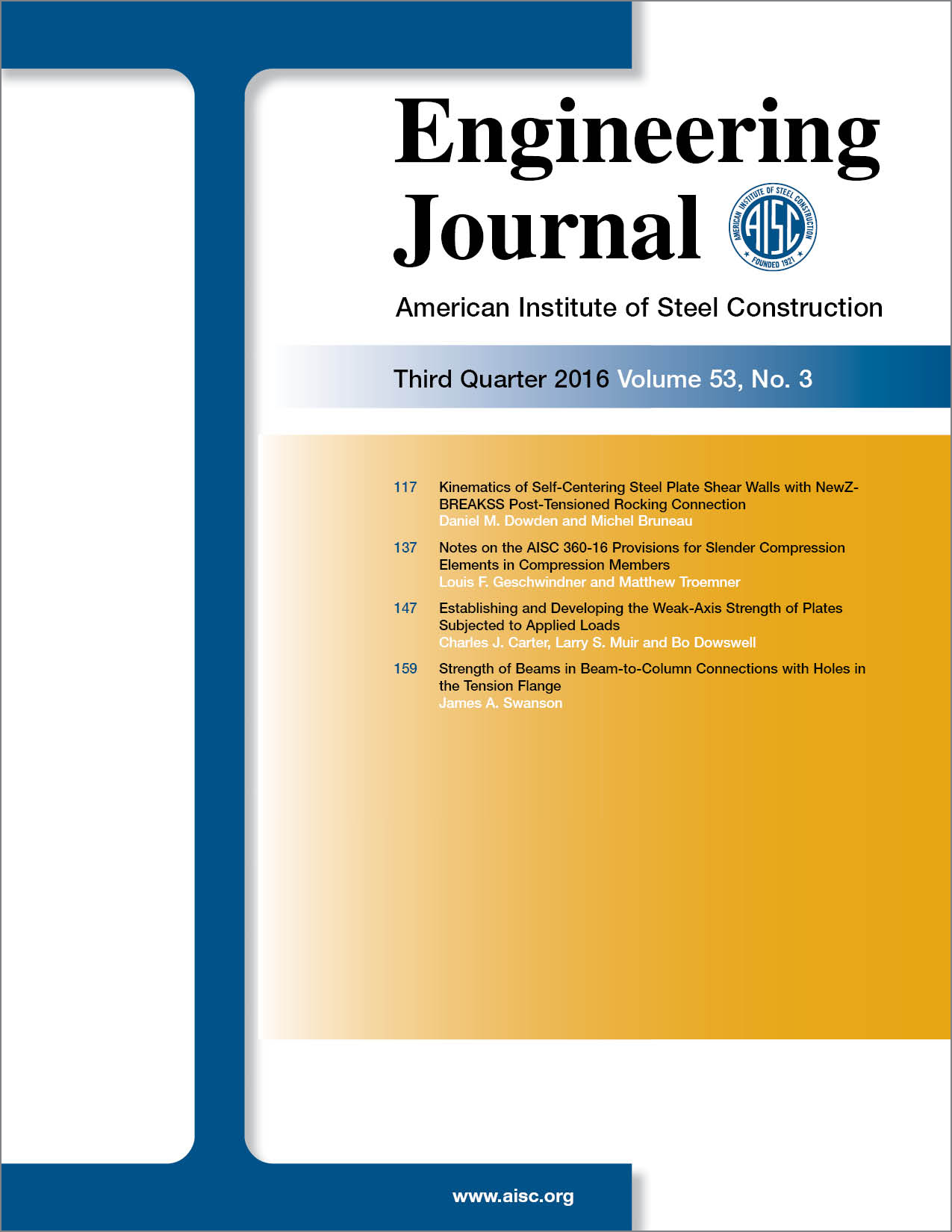Establishing and Developing the Weak-Axis Strength of Plates Subjected to Applied Loads
DOI:
https://doi.org/10.62913/engj.v53i3.1101Keywords:
gusset plate, fillet welds, special concentrically braced frame, hinge, seismic, connectionAbstract
When a plate is subjected to applied loads and significant out-of-plane deformation, the demand on the connection may exceed that derived from calculations due to the applied loads only. Where inelastic behavior is acceptable, the intent may be to ensure ductile behavior. For plates with fillet-welded edge connections, this can be accomplished by sizing the fillet welds to develop the strength of the plate. One specific example of this arises when a brace in a special concentrically braced frame (SCBF) is subject to compression and buckles out-of-plane. Bending of the gusset plate may demand more of the gusset plate edge connection than the calculated forces that result on the gusset edge due to the brace force specified in Section F2.6c.2 of AISC 341-16 (AISC, 2016). If not accounted for in the weld size, the uncalculated weak-axis moment on the welds from out-of-plane bending of the gusset plate might cause rupture of the fillet welds to govern the behavior of the system. The method provided in this paper is suitable to determine the minimum size of fillet welds necessary to prevent weld rupture as out-of-plane deformations occur. It can be used for fillet-welded gusset plate edges in SCBFs to satisfy the exception provided in Section F2.6c.4 of AISC 341-16.

